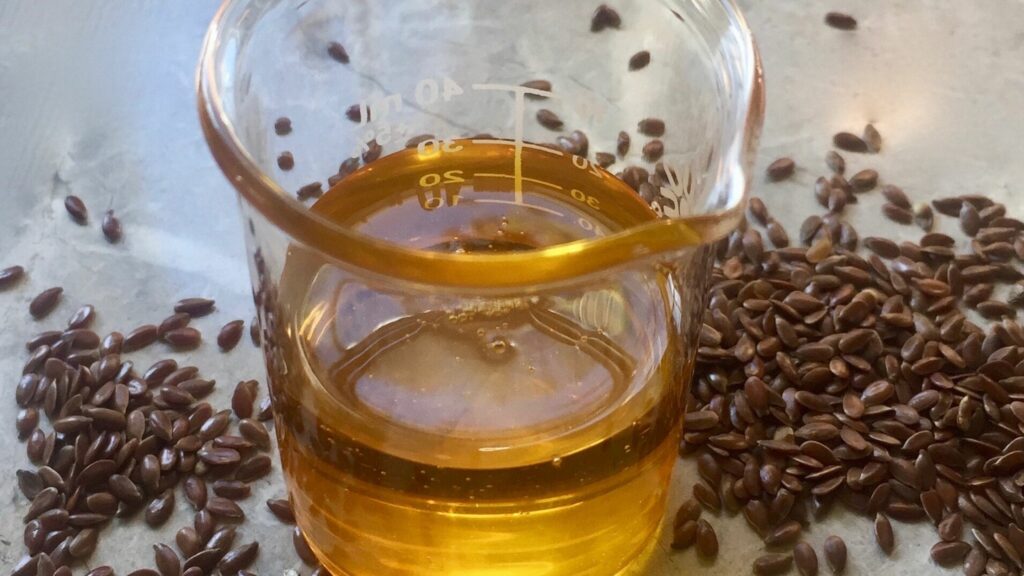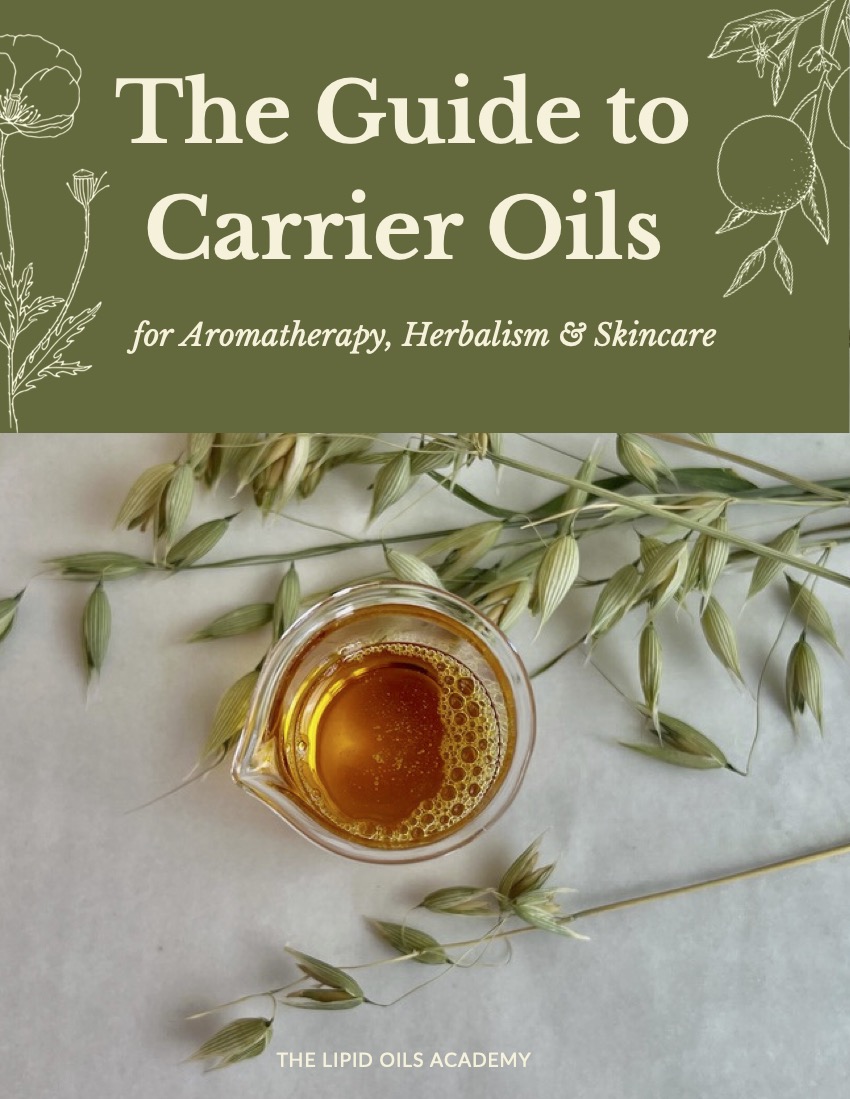What is the difference between a ‘dry oil’ and a ‘drying oil’?
Terminology can be confusing, especially when talking about these two different types of oils
The words sound so similar, and are, but in trying to convey the qualities behind them they are radically different.
Drying Oils
Drying oils are quite literally the oils that dry.
Oils high in mono and polyunsaturated fatty acids will dry and harden to the touch over time when exposed to oxygen, heat and light.
An Example from the Art World
Linseed oil used in art and oil painting is essentially flax seed oil. And being high in polyunsaturated fatty acids, flax seed oil will dry and harden over time.
These drying oils are used to make paint, inks and varnishes. They dry to the touch. Think Rubens or Leonardo da Vinci, linseed oil was common as a medium for paint pigments during the Renaissance period. Even linoleum flooring is also made from linseed oil as well as fillers and pigments.

So then what is a dry oil?
Dry Oils
Dry in this context has to do with the feel of the oil, it feels dry when applied to the skin, not oily or greasy.
Tannins in Oils
The dry oils have tannins in them, which are astringent, polyphenolic molecules that bind to and precipitate proteins and various other organic compounds and are found in a wide range of plant tissues including lipid oils.
Tannins come from tannum the word for oak bark one of the major sources of tannins used for tanning animal hides to make leather. Oak bark and galls, are used as astringent compounds by herbalists to tighten and pull together tissues for healing wounds.
When trying to differentiate between drying oils, literally dry to the touch, and dry oils think of puckering. Astringency is puckering think of very strong black tea, or persimmons, or quince, or cranberries.
Tannins and Tea
We lived in England for a time about 20 years ago and I still remember how black tea was served in an English tea shop. A very very strong brew would be brought to the table along with a second pot of hot water to dilute the tea to your liking. But that first pot was strong enough to curl the enamel on your teeth.
This is the nature of tannins. And, so I always first think of camellia seed oil when talking about the dry oils because camellia oil is pressed from the seeds of the Camellia plant the source of black and green tea. Camellia sinensis, the tea plant, or C. japonica or C. Oleifera, all have lipid compounds that can be used for skincare.
Drying oil – is an action the oil dries to the touch
Dry oil – it feels dry on the skin and is associated with puckering, tightening like very strong tea
How to Use
The dry oils are good for skin with over active sebaceous glands, oily skin and skin that breaks out easily.
High tannin oils like camellia, hazelnut, grapeseed will help to calm overly oily skin.
The drying oils have important skin benefits, but you want to protect them from drying or going rancid.
These are the polyunsaturated dominant fatty acid oils like walnut, chia seed, flax and others that absorb deeply into the skin.
These oils are sensitive to oxygen, which will trigger the drying process and so should be kept cold and dark in storage and used quickly.
Have you experienced the difference between dry and drying oils in your work? Leave a comment below.



I would like to infuses raspberry oil with a stable oil is this ok adding an antioxidant
Hi Susan, thanks for the interesting article. Just to capture clearly the difference: both dry and drying oils are mono and polyunsaturated fatty acids , so it is related to rancidity of oils? does a dry oil turn into a drying oil once rancid?
Sorry if I totally misunderstood, just could not recall any oils from the tens I have had which “harden to the touch”.
Hi Hala, They are different qualities.
Drying oils are like paint – dry to the touch and tend to be high in polyunsaturated fatty acids. And yes are related to rancidity and oils oxidizing.
Dry oils are often monounsaturated – but don’t have to be – and feel dry on the skin due to the unsaponifiable compounds like tannins in the oil.
It’s a little confusing as the terms are so close – hope this helps.
How best to clean bottles that have stored oils? Especially since the Boston variety have such small necks it’s a little tricky to clean them thoroughly…
You’ll need a good bottle brush and soap that removes the oil.
Hi Susan thank you for the article! I have been wondering the same as Olesya above, do carrier oils really contain tannins? Because tannins ARE water soluble, aren’t they?
I replied to Olesya, see above – I experience the oils first then do the research on the why or how of their effect on the skin. Having no formal scientific or chemistry background I can’t be more specific for you. This is an exploration of the raw materials.
Hi Susan,
Thank you for this article. There are skin products made with green tea that have rave reviews, but do they contain tannins?
Quite possibly they do. It would be hard to know with out experiencing them.
Thank you for an interesting article! Do fatty oils really contain tannins? As far as I know the majority of them is water-soluble
Hi Olesya – I hope this helps, this is how I can explain it now. Tannins are part of the unsaponifiable portion of oils, usually at less than 1% and includes a number of other vitamins, minerals and natural plant compounds as well. We know that tannins are present in various parts of plants including seeds and kernels and of course oils are pressed from the seed part of the plants.
I am not a chemist but there is a definite feeling of astringency in some oils and butters, this dry feel I discuss in the article. In response to your question I did some research into papers on tannins to see what I could find to share with you. A very general article states that tannins are “freely soluble in water, alcohol, glycerol.” Glycerol is the backbone of the triglycerides that make up oils so perhaps this ability to carry these astringent compounds if found there.
The feel of astringency is present in the oils so we have to discover the mechanism or compounds that creates the experience.
Hi Susan,
Should all of our carrier oils be stored in the fridge? At least until they are ready to be used?
Storage of oils is best at cool temperatures and in the dark. Highly polyunsaturated oils could be stored in the fridge, for others it is not necessary.
Would it hurt to store all the carrier oils in the fridge? I feel like particularly in the summer it’s so difficult to regulate indoor temps, even in a basement…
No and in some climates it is preferable.